The Finalists Of The 14th Annual Smithsonian Photo Contest
Winter Is Coming
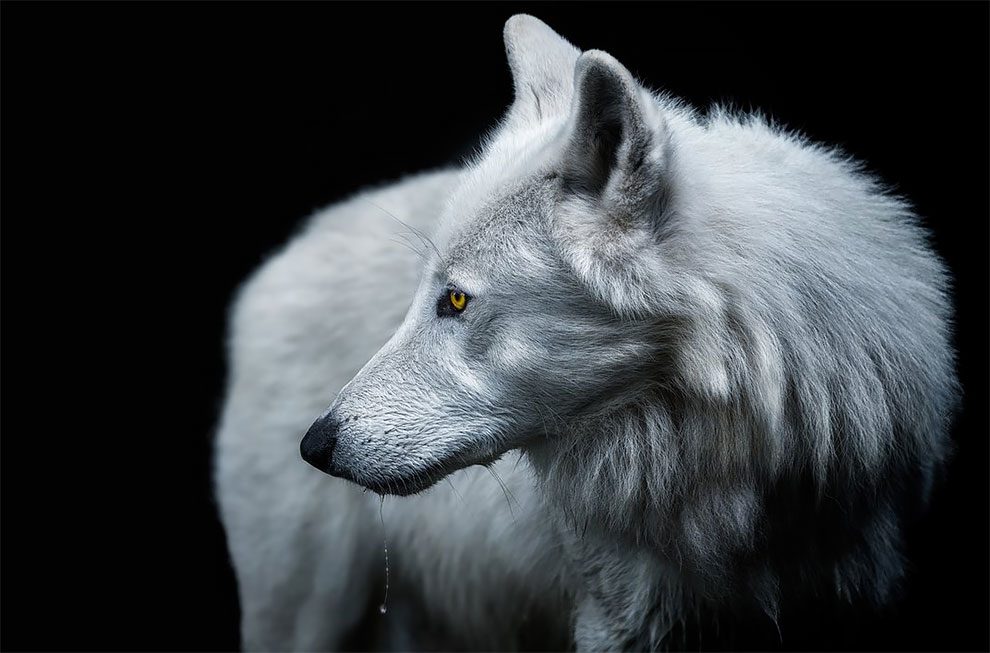
The Arctic wolf is a sub-species of the grey wolf and lives in the Arctic regions of North America. (© Pedro Jarque Krebs/Smithsonian Photo Contest)
More info: Smithsonian Photo Contest
Before the Portrait
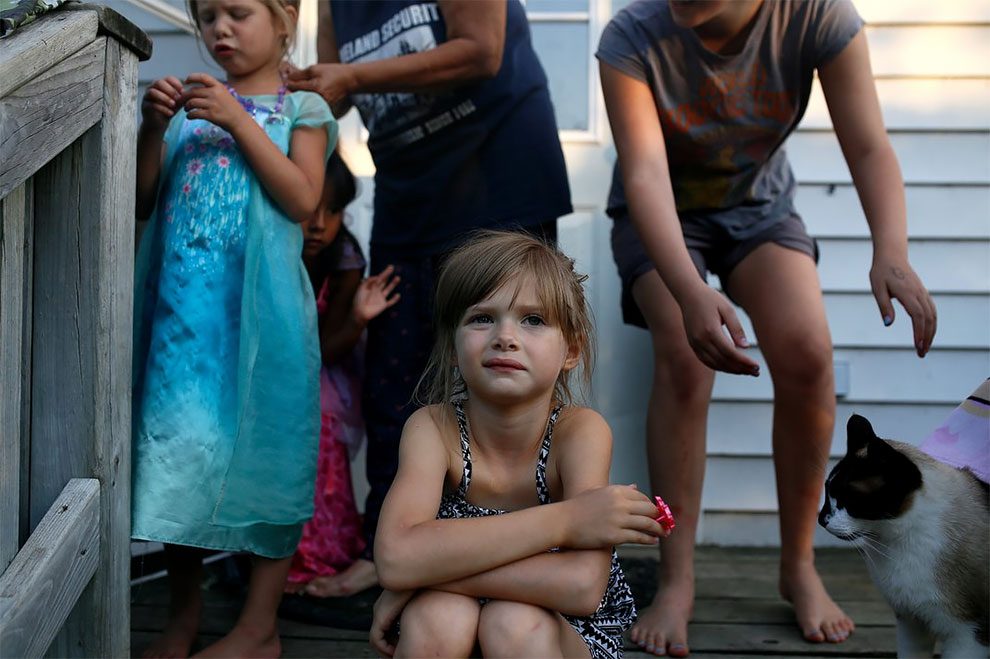
Lila Chosa sits on the side porch of her house while her family and friend get ready for a portrait behind her. Lila’s grandmother, Heart Warrior, has spent years battling to keep custody of her grandchildren in Minnesota. It’s part of a long history of Native American removal and resistance. (© Stephanie Foden/Smithsonian Photo Contest)
Last Dance
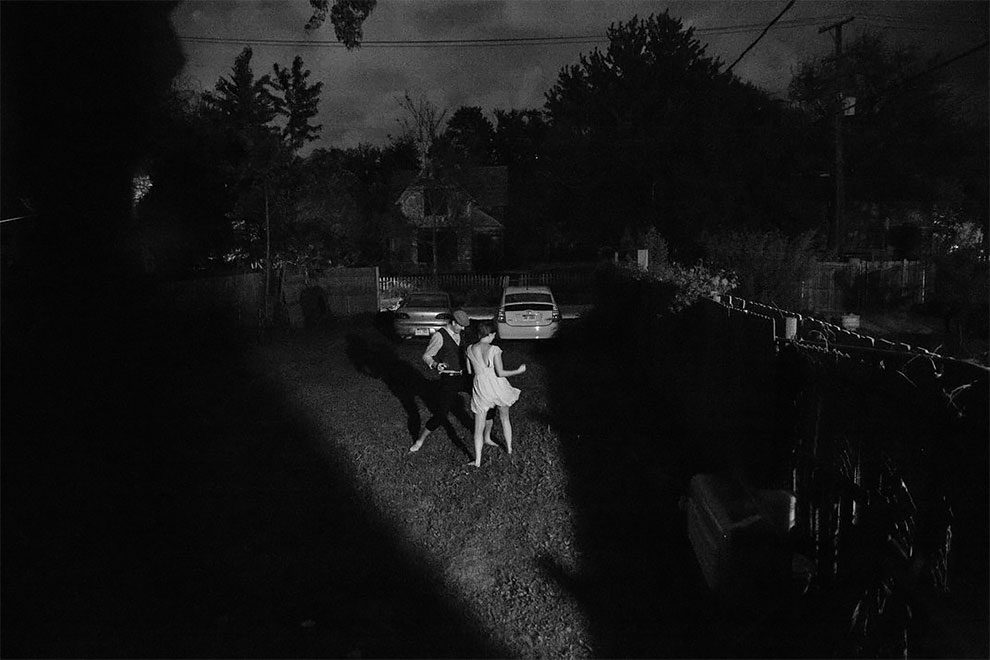
A couple dances in the backyard of a home in the West Village neighborhood of Detroit.(© Amy Sacka/Smithsonian Photo Contest)
Paper Mill
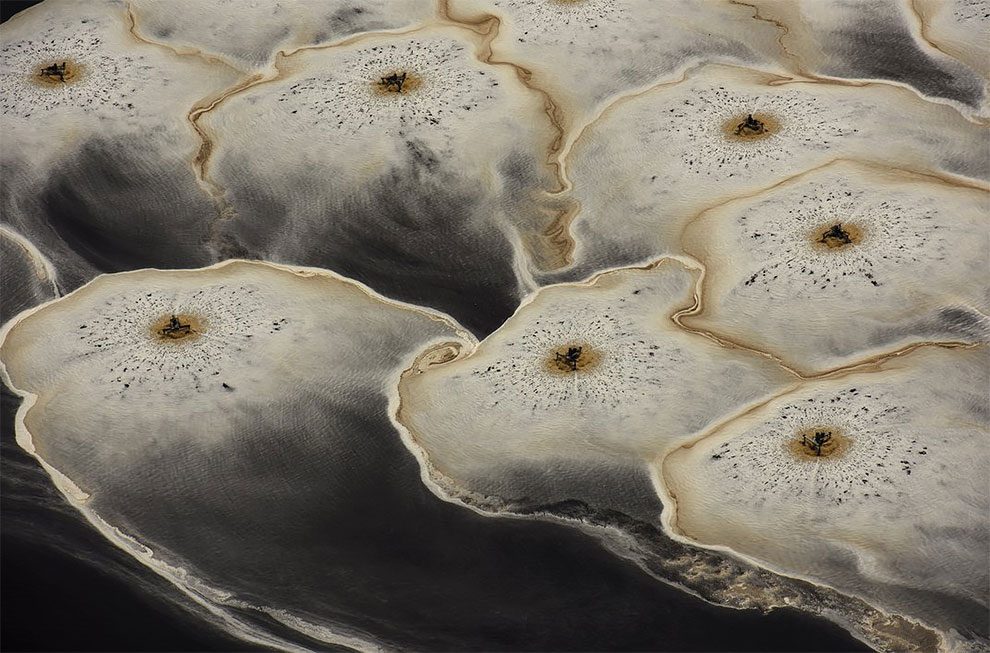
Waste from a paper mill is agitated by aerators, producing steam and foam, which are pushed by the wind. Clearwater Paper Reservoir, Lewiston, Idaho. Aerial image (shot from a plane at 1,500 feet). (© Jassen Todorov/Smithsonian Photo Contest)
Texas Winter
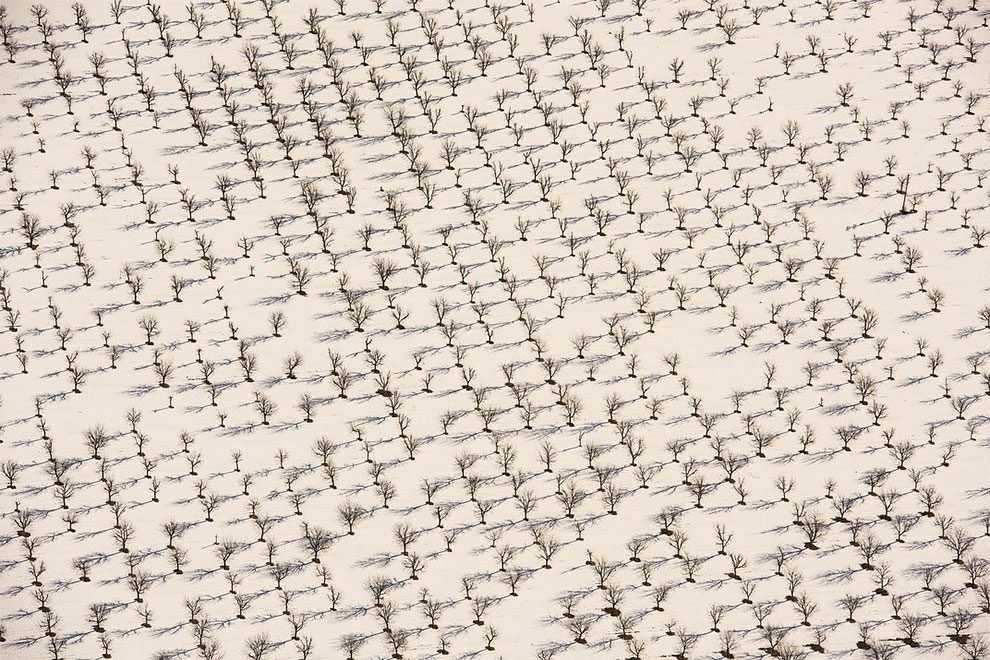
A very symmetrical orchard (I believe apple trees). Aerial Image (shot from a plane). (© Jassen Todorov/Smithsonian Photo Contest)
Yellow-Flecked Sipo
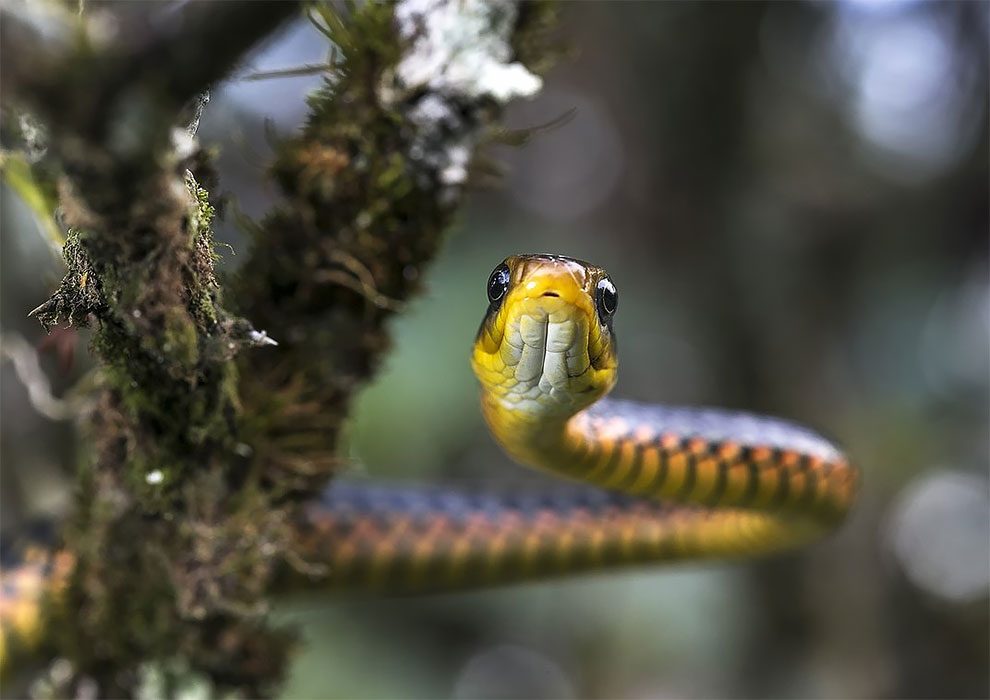
This beautiful yellow-flecked sipo was found at Bosque Protector La Perla near La Concordia, Ecuador. I am always impressed with a snake’s ability to hold itself motionless while sussing out a situation. (© Claire Waring/Smithsonian Photo Contest)
Flying
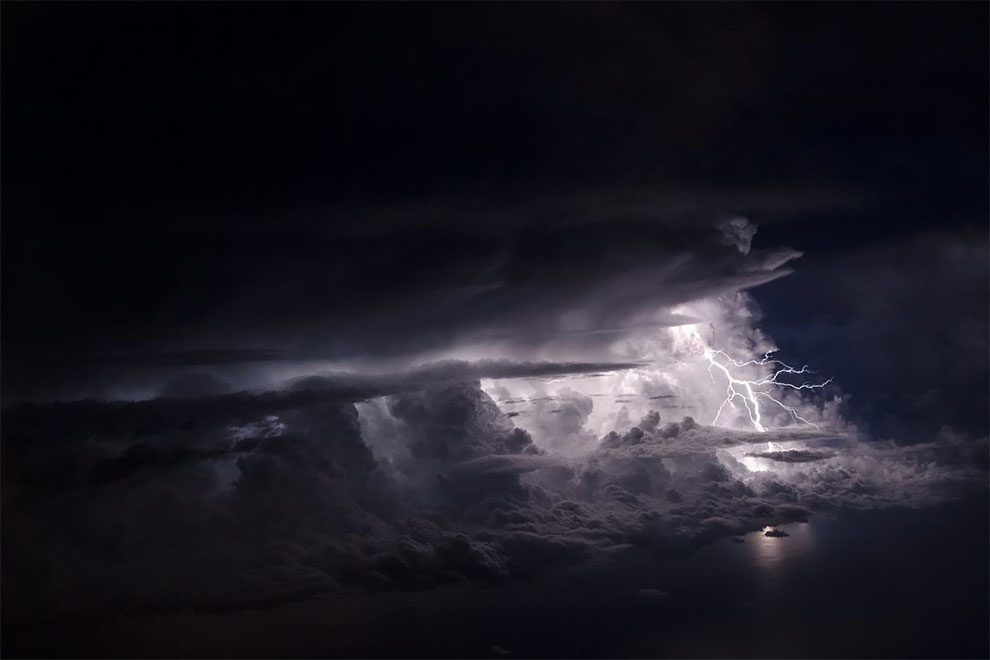
We were the very last to get on a small plane taking us from Sochi to Saint Petersburg. Little did we know what was waiting for us up above. I took the window seat not expecting to see much, as there was a light drizzle landing on the plane. But as we took off, it became clear I had the best seat on the plane. (© Lina Samoukova/Smithsonian Photo Contest)
Father Calling
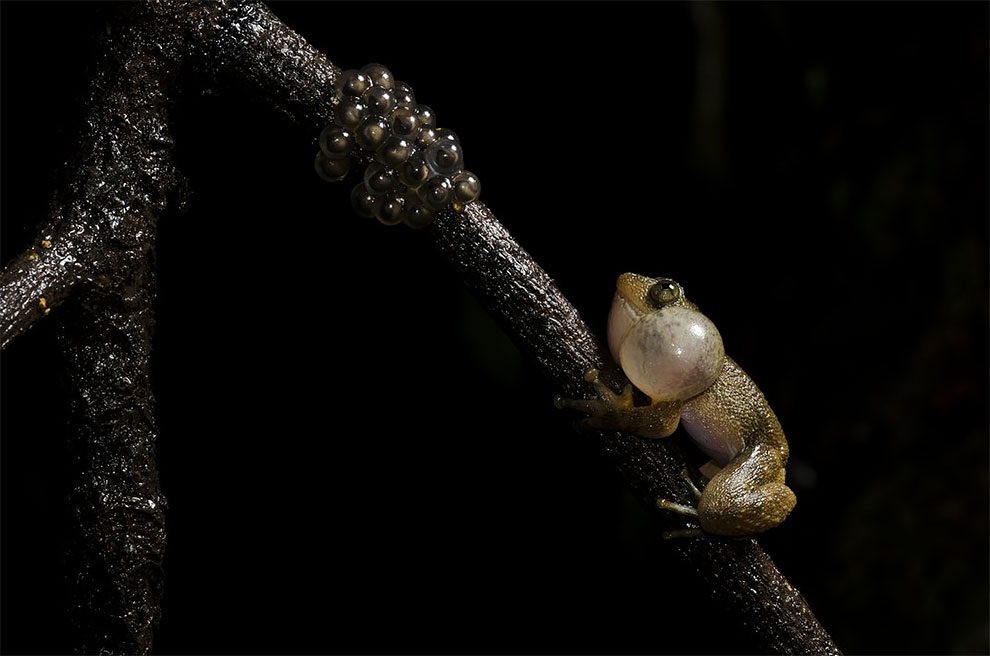
This night frog, endemic to the Western Ghats of India, exhibits a unique breeding behavior. The males call for females, the females come and lay the eggs, then the males fertilize them. In this image, the male has successfully fertilized a clutch of eggs from a female. He is calling out for other females to lay eggs. (© Karthik AK/Smithsonian Photo Contest)
Look Me in the Eye
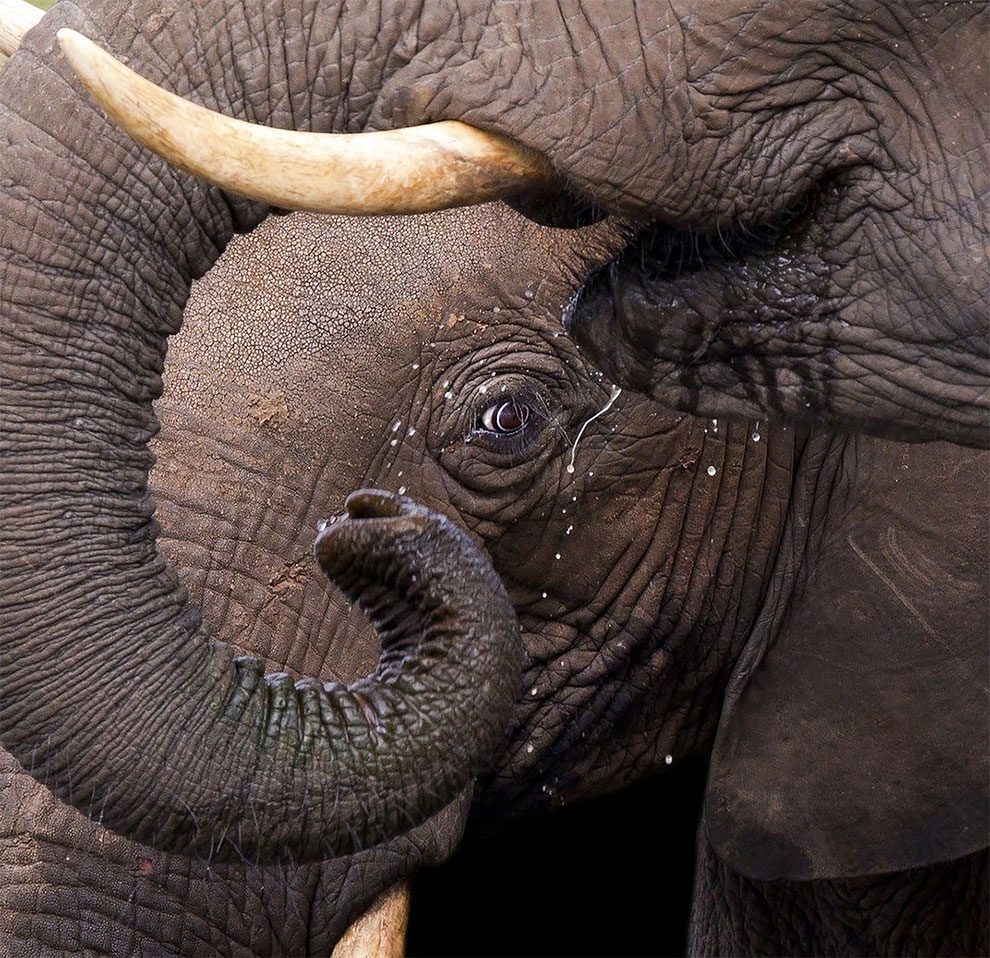
I am always looking for unique ways to showcase the beauty of elephants in the hope that it will make a difference in the way they are viewed and appreciated. This image was taken when a herd of elephants came down to the banks of the Chobe River in Botswana for an afternoon drink. The opportunity presented itself as the the trunk of the elephant in the foreground framed the eye of the elephant in the background. I focused on the eye, and with some creative cropping, was very pleased with the final result. (© Prelena Soma Owen/Smithsonian Photo Contest)
Swamp Raccoon
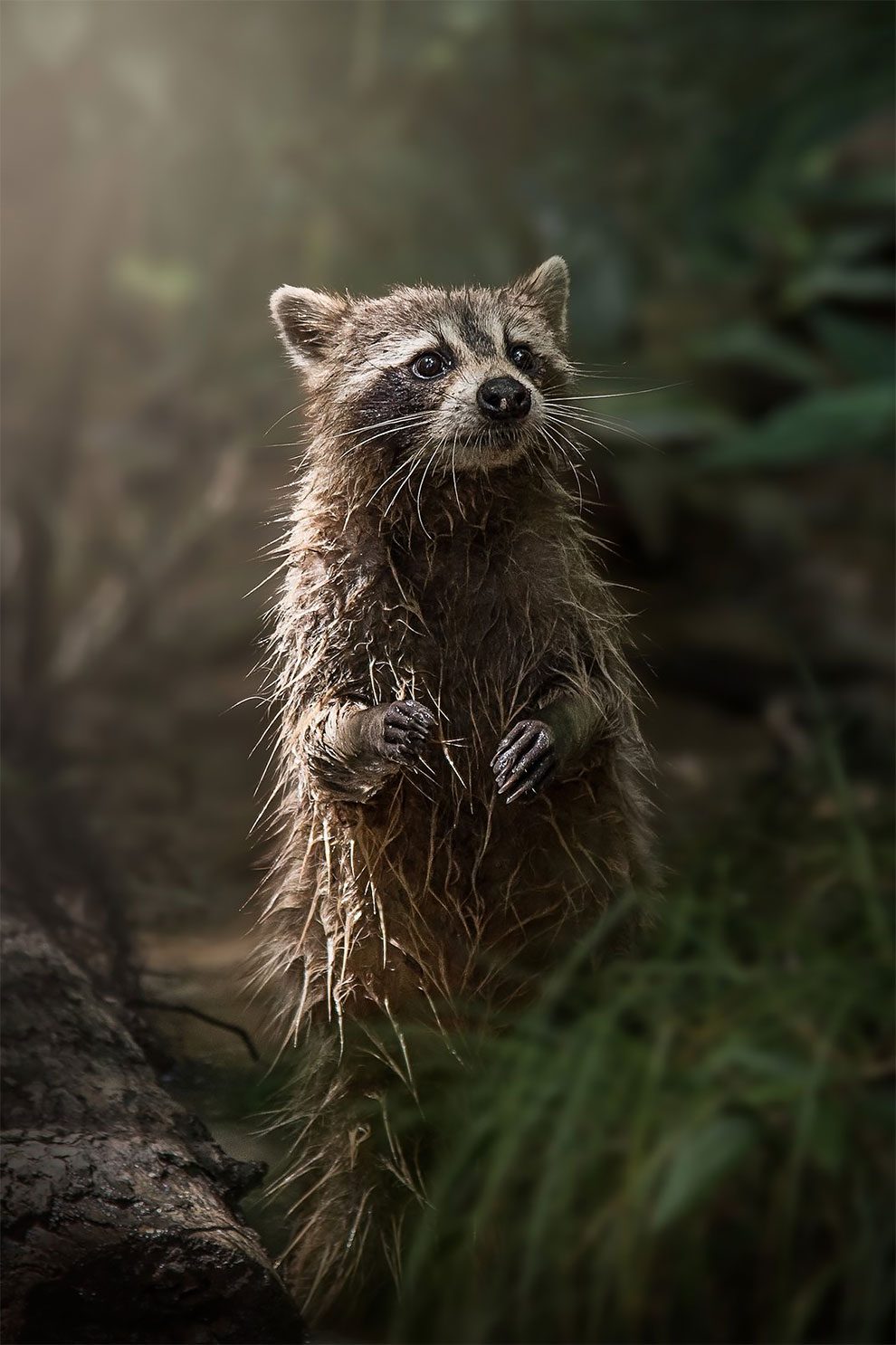
While I was looking for alligators at a swamp in Louisiana, this beautiful little creature wandered out of the murky waters right into the morning light. (© Kim Aikawa/Smithsonian Photo Contest)
The Hidden Murder

A spider with a housefly kill, hiding under the petals of a Madagascar periwinkle flower. (© Swaroop Singha Roy/Smithsonian Photo Contest)
Firewalking
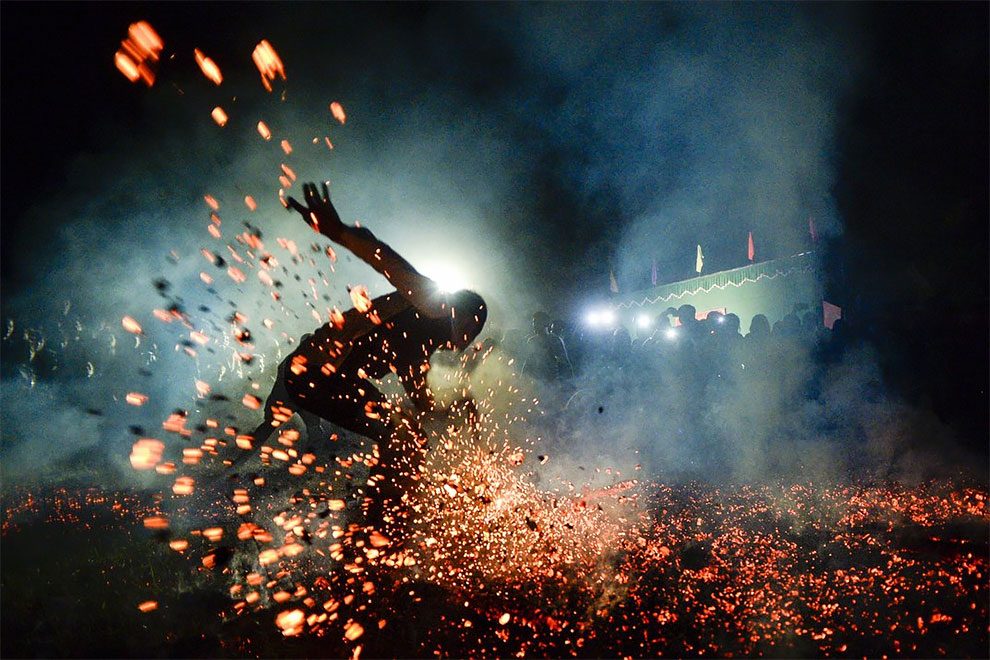
Firewalking is the act of walking barefoot over burning charcoal. In Ha Giang, a mountain province in northern Vietnam bordered by China, the Pa Then ethnic group observes this practice to wish for prosperity in the new year. (© Binh Duong/Smithsonian Photo Contest)
Lighting the Old Man
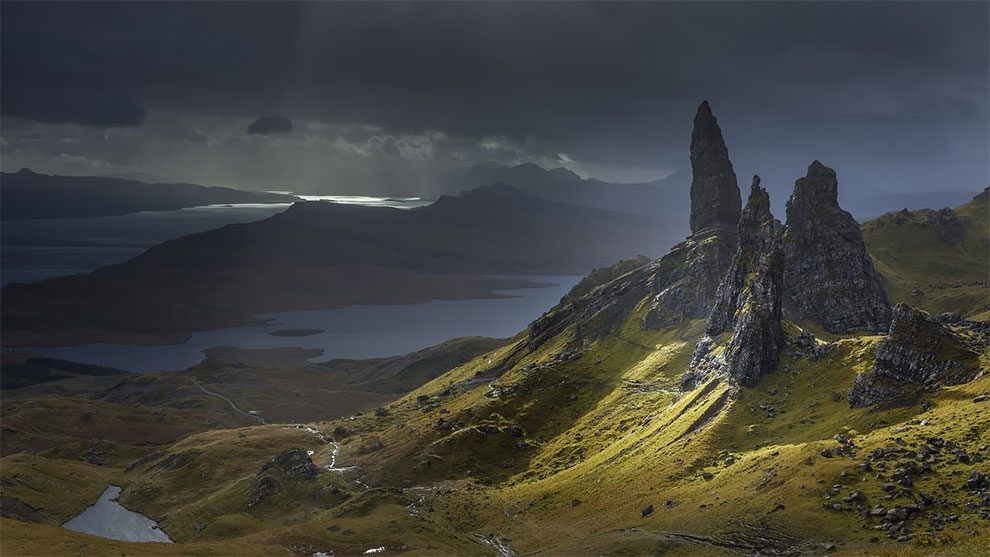
On a stormy autumn day a fleeting shaft of light illuminates the Old Man of Storr and other pinnacles of the Trotternish Ridge on the Isle of Skye, Scotland. (© Garry Ridsdale/Smithsonian Photo Contest)
Munnar
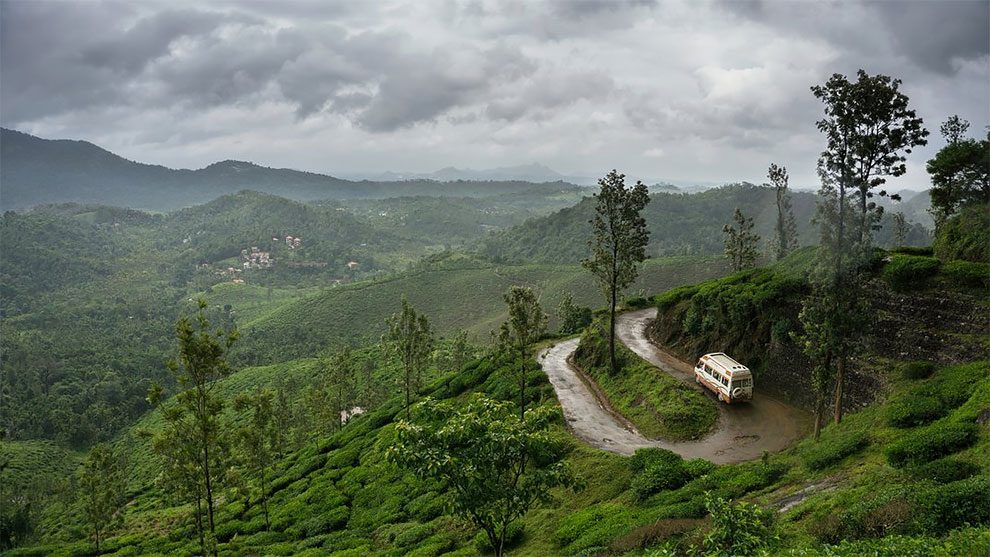
Munnar is one of the most beautiful hill stations in Kerala, India. It is a haven during the monsoon season as nature surprises you with amazing clouds and mists! (© Mustafa AbdulHadi/Smithsonian Photo Contest)
Cádiz Streets
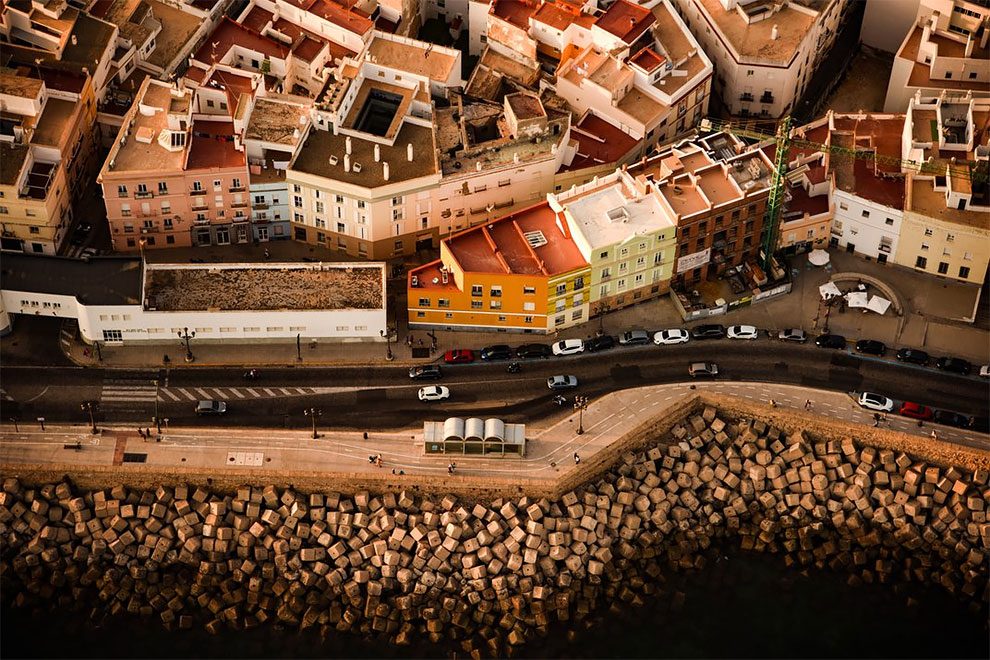
City streets in the Andalusian city of Cádiz. Photo taken at sunset from a small plane. (© Aya Okawa/Smithsonian Photo Contest)
Individual Communication
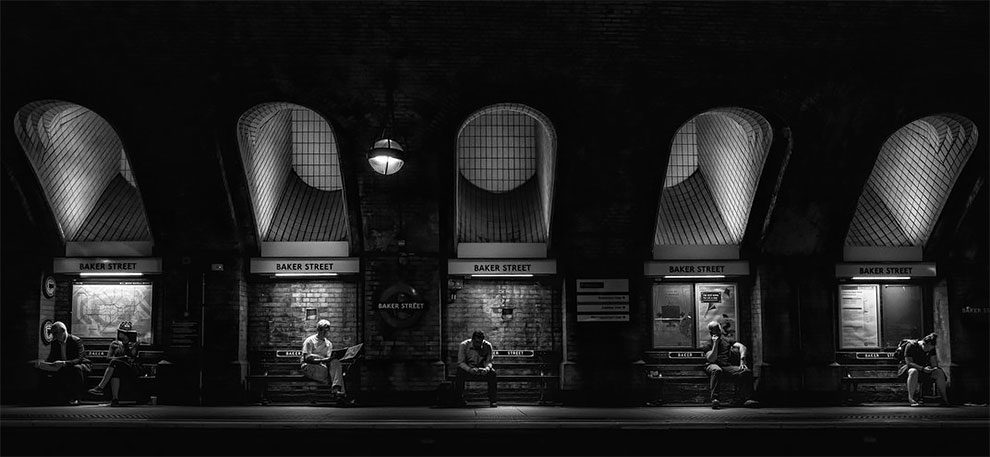
Commuters on the London Underground are communicating. They are not communicating with each other, but across the world from their cell-like positions on the platform. (© Peter Nutkins/Smithsonian Photo Contest)
Beautiful But Fading Light
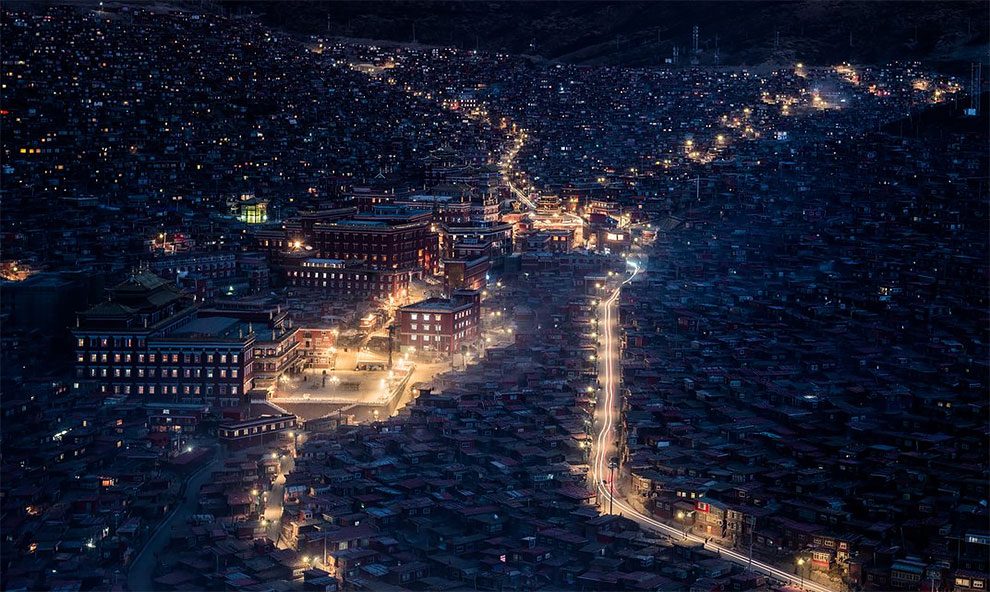
The world’s largest Buddhist academy is located in a remote place in Sertar County, China, named Larung Gar. People from all over China come here to learn Buddhism. However, it is a controversial place. Nuns and monks have suffered from demolition and imprisonment. In June 2016, the authorities imposed new rules, which put thousands of residents at risk of removal. These residents have not been given the chance to practice religion peacefully. If the oppression continues, this unique place will eventually fade from history. (© yuen hung neoh/Smithsonian Photo Contest)
Brown-Eyed Beauty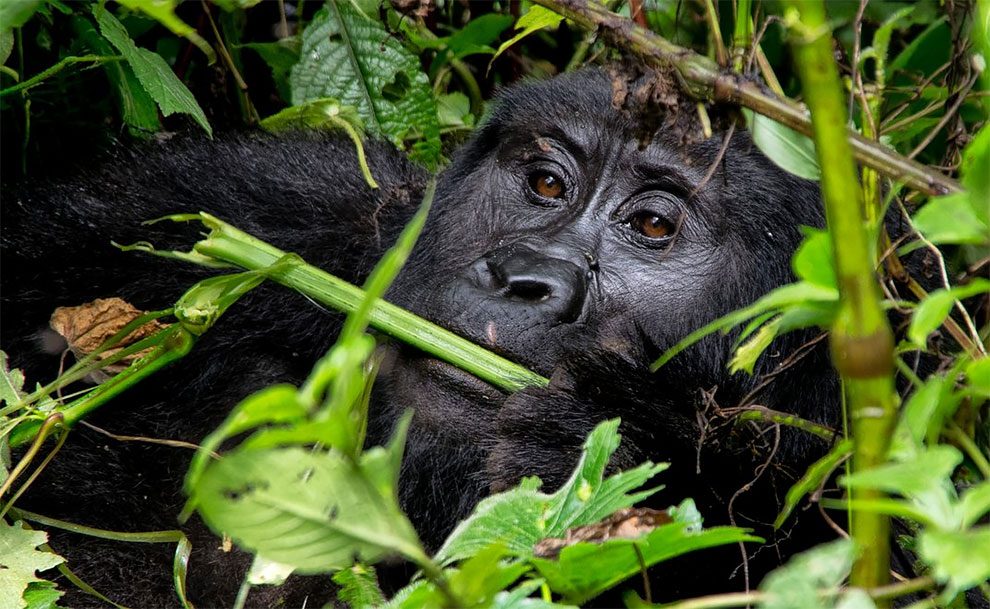
Sustainable travel is travel that does not have a negative impact on the environment and ideally would not only protect the environment, but also provide opportunities for local communities. I see visiting the mountain gorillas in Uganda as sustainable travel because the visits support the local community while protecting the endangered gorillas. Tourists can pay to visit families of these magnificent animals for one hour a day, up to eight trekkers at a time. Over time, the gorillas have habituated to people and are tolerant of their visitors. The rangers dedicate their lives to protecting the gorillas, and you can clearly see that they love their job.
Porters are hired from the local community to help the trekkers through the jungle. The porters are rotated on a regular basis so that more people in the community can work. This way, the local community receives a benefit and poaching of the gorillas is less likely. This photo was taken during our one-hour visit with the Mubare Gorilla Family Group in Bwindi Impenetrable National Forest, Uganda. After about one and a half hours of trekking through the forest, we were fortunate to be able to watch these magnificent animals up close. This photo is of a female gorilla enjoying a midday meal. There are less than 1,000 mountain gorillas left on Earth. (© Lynda Hanwella/Smithsonian Photo Contest)
Jakobshavn Melt
“Jakobshavn Melt” was captured within the Ilulissat Icefjord, Greenland, while on an expedition to document one of the largest calving events in 2016. The objective of the journey was to promote environmental awareness and education about the significant climactic changes occurring in the Arctic. This single calving event produced enough ice to meet the domestic freshwater needs of the United States for six months. The image was captured at 1:00 am during the last sunset before summer’s 24-hour light.
Sustainable travel embodies what it means to be an environmental photographer. I believe that each shot should not just be a moment in time, or a beautiful representation of a place. It should be filled with purpose and meaning, providing viewers a means to understand the evolving world at large. The image “Jakobshavn Melt” is but a small glimpse into the reality of a major environmental event. (© Kerry Koepping/Smithsonian Photo Contest)
Golden Monkey Surveying the Area
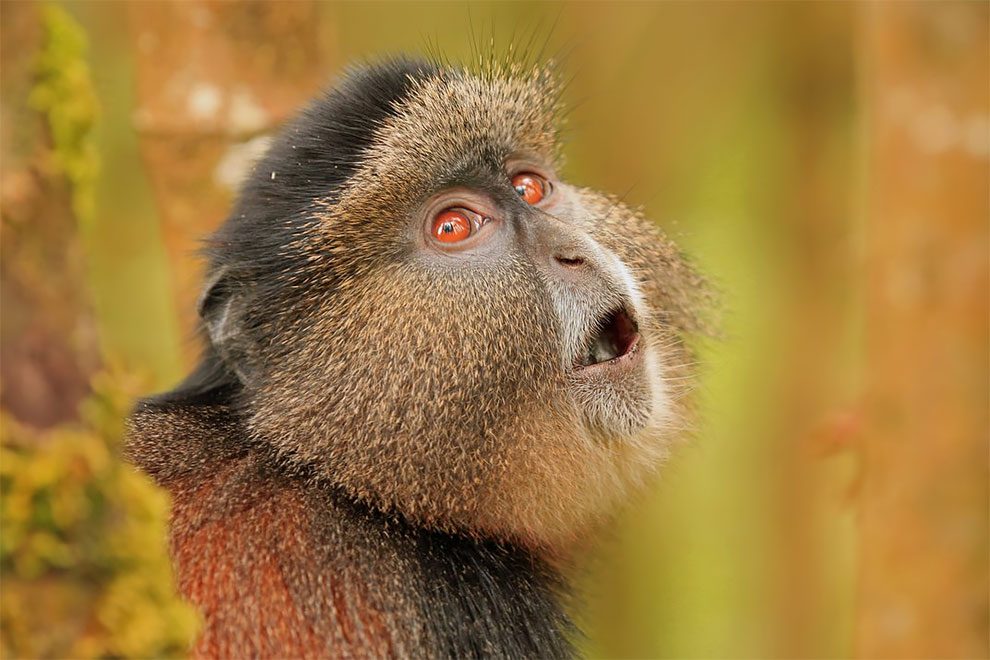
Sustainable travel enables conservation of the things that make a destination desirable in the first place. Rather than denuding forests for a strip of souvenir shops and a tiny fenced reserve, places like Rwanda’s Volcanoes National Park protect the native habitat for several rare species, including the golden monkey, mountain gorilla and forest elephant. Park tourism dollars employ guides, trackers and porters and also support community development projects that reduce the incentive to cut forest for illegal farms or set antelope snares, which can kill endangered monkeys and gorillas.
Many primate families in the park are comfortable with close human presence. I was thrilled to get within twelve feet of this beautiful golden when it descended from the trees to search for tender bamboo shoots. It paid little attention to me, but surveyed the area briefly, perhaps as a caution against eagles. (© John Beckman/Smithsonian Photo Contest)
Soaring Crane
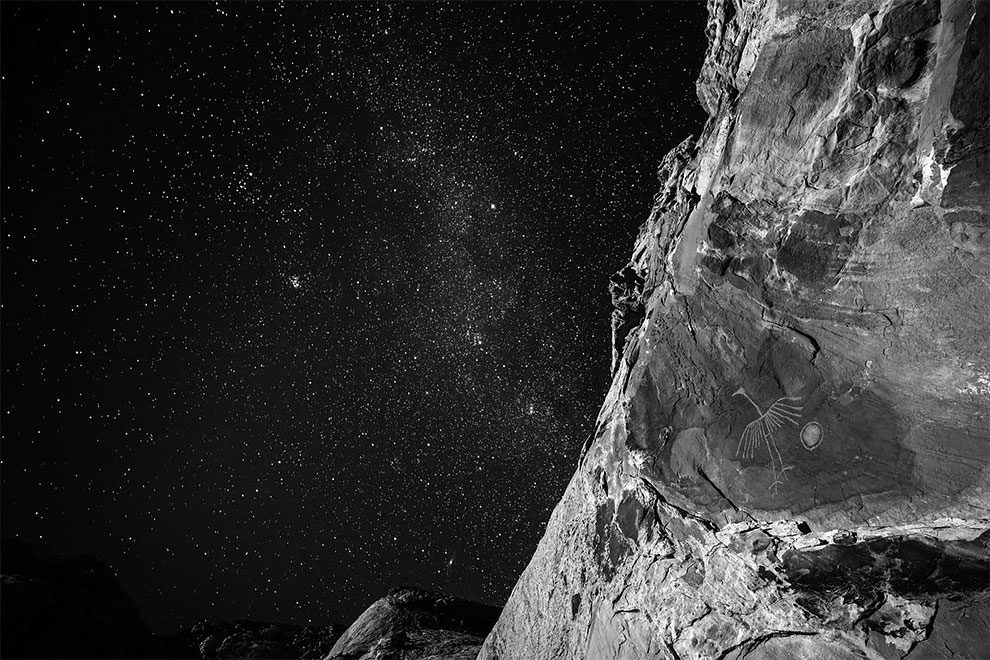
I believe sustainable travel is traveling through a natural experience. For me the most rewarding way is to explore ancient cultures in conjunction with ancient skies.
In what is now the Bears Ears National Monument, a friend and I spent hours of wandering until we came upon the Soaring Crane. We sat in the canyon until nightfall and photographed the art by the light of a thin moon. This area of the Utah desert is a land of dark skies and one of the least light polluted places in the continental United States. Its ancient walls and art exist far from urban boundaries. We visit to step out of the modern world and for a brief time remember how the planet was and how our species dwelled for millennia. The stars and planets above our heads comprise the same sky that guided the Crane’s artists. These sites need to be appreciated in their original context under the same dark, starlit sky that inspired our religions, mythologies, mathematics and sciences.
For several years I have been documenting prehistoric ruins, ceremonial structures, petroglyphs and pictographs in the context of the night sky. I hope to eventually collect these images into a book. (© Marc Toso/Smithsonian Photo Contest)
Nevada Solar One

Spread over an area of 400 acres, the Nevada Solar One is a massive project built in the hot and dry desert, just south of Las Vegas. The plant uses 760 parabolic trough concentrators with more than 182,000 mirrors that concentrate the sun’s rays onto more than 18,240 receiver tubes. The projected CO2 emissions avoided is equivalent to taking approximately 20,000 cars off the road annually. It is a refreshing site to look at. I, for one, can’t wait to fly a solar-powered aircraft. This image is a part of a large project documenting our transition to clean and renewable energy. (© Jassen Todorov/Smithsonian Photo Contest)
Keel-Billed Toucan
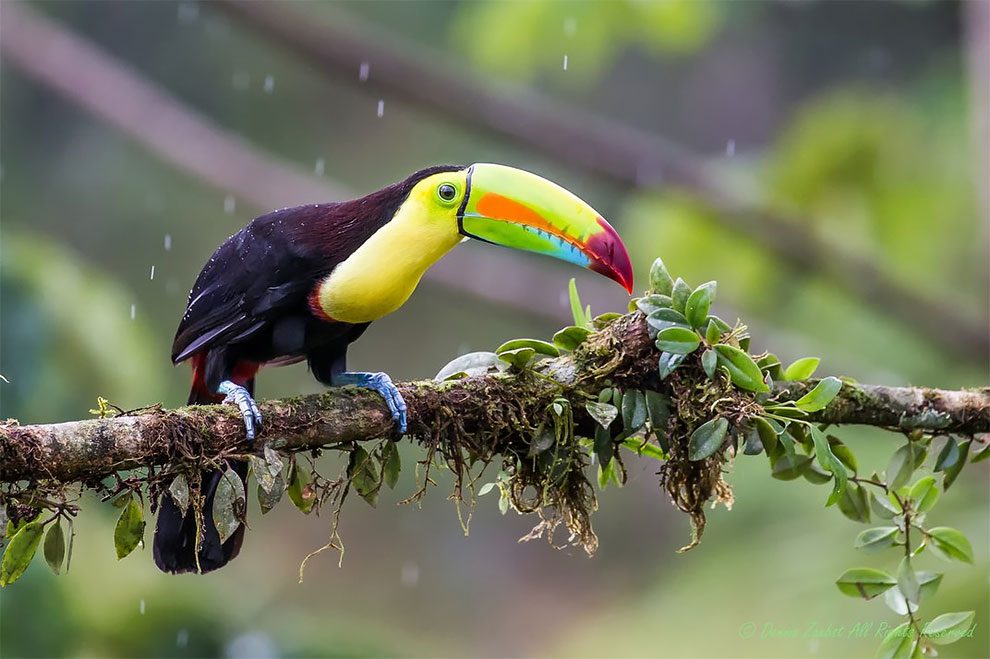
A wild keel-billed toucan perches on a branch during a rainstorm in Costa Rica. I captured this image during a photography tour of Costa Rica focused on documenting its incredible bird population. Costa Rica comprises less than one percent of the world’s land mass, but five percent of its biodiversity. I am hoping this image, and others that I captured there, will encourage people to travel to this country, inform them of the marvelous wildlife heritage we enjoy there and inspire greater appreciation of what we still have to preserve for future generations. (© Dennis Zaebst/Smithsonian Photo Contest)
Where Water Once Flowed
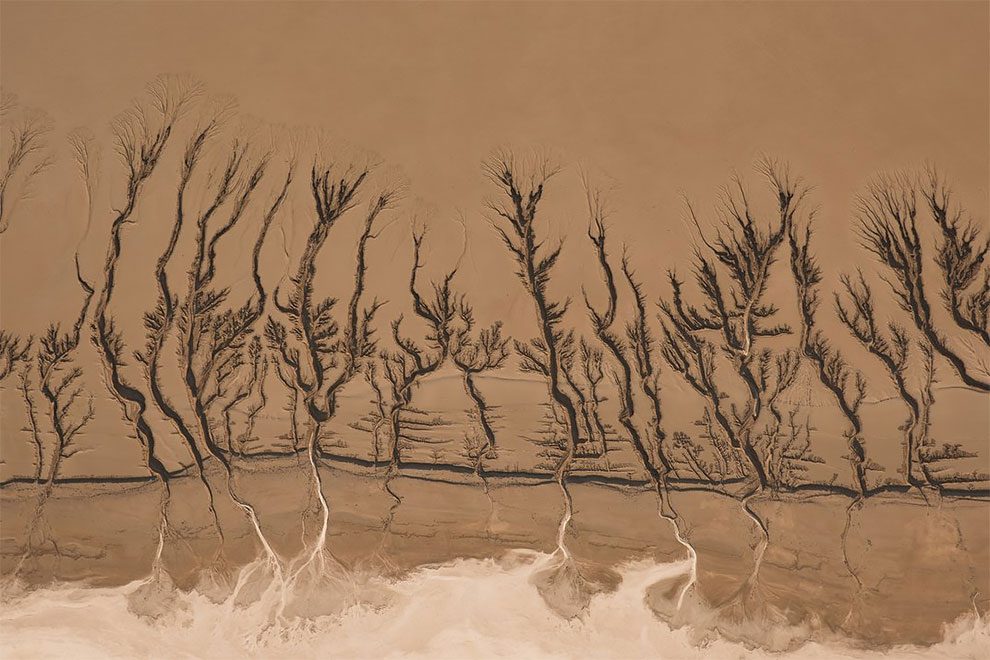
Patterns in an endorheic lake, now completely dry, of California’s Mojave Desert show the constantly transforming beauty of nature. For me, sustainable travel involves traveling around the world, particularly to support national parks and other wilderness areas that exist to protect our natural resources. This photo was taken as part of an ongoing series I have been working on over the past two years, observing transformations in the natural world with special consideration for issues regarding environmental sustainability. A particular focus of this photo series is water management and water patterns. (© Aya Okawa/Smithsonian Photo Contest)
Red
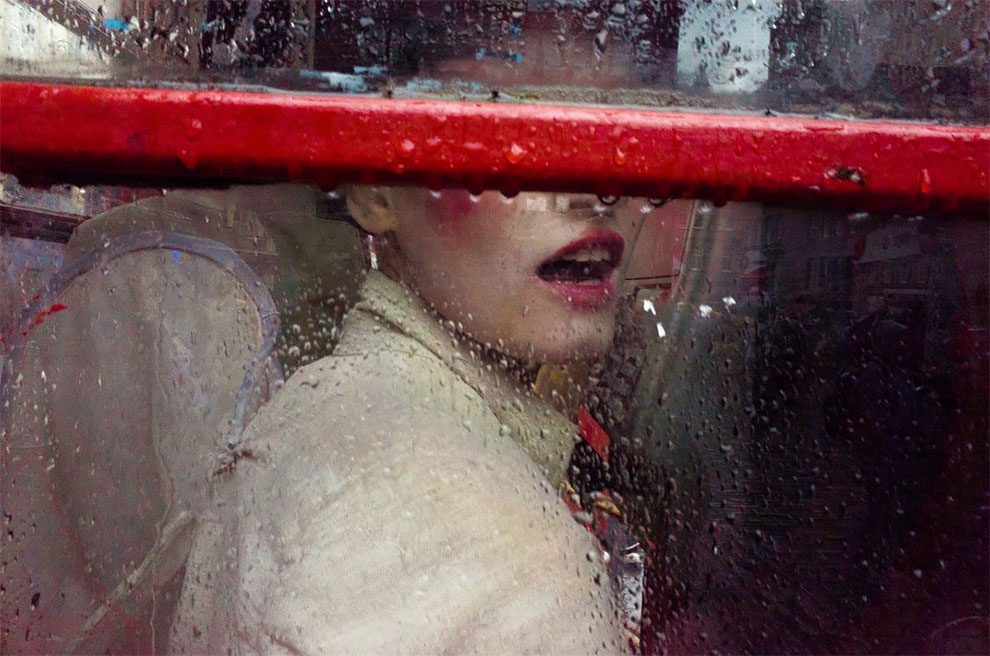
I’m a street photographer. I search the streets of chaos and try to capture the beauty within that chaos. This is a candid picture and not posed. I was walking up the Royal Mile when it started to rain. People started looking for shelter. I found this subject hiding in a red phone box and caught them by surprise. I prefer viewers to interpret the picture for themselves. (© Gareth Bragdon/Smithsonian Photo Contest)
Cormorant Fisherman
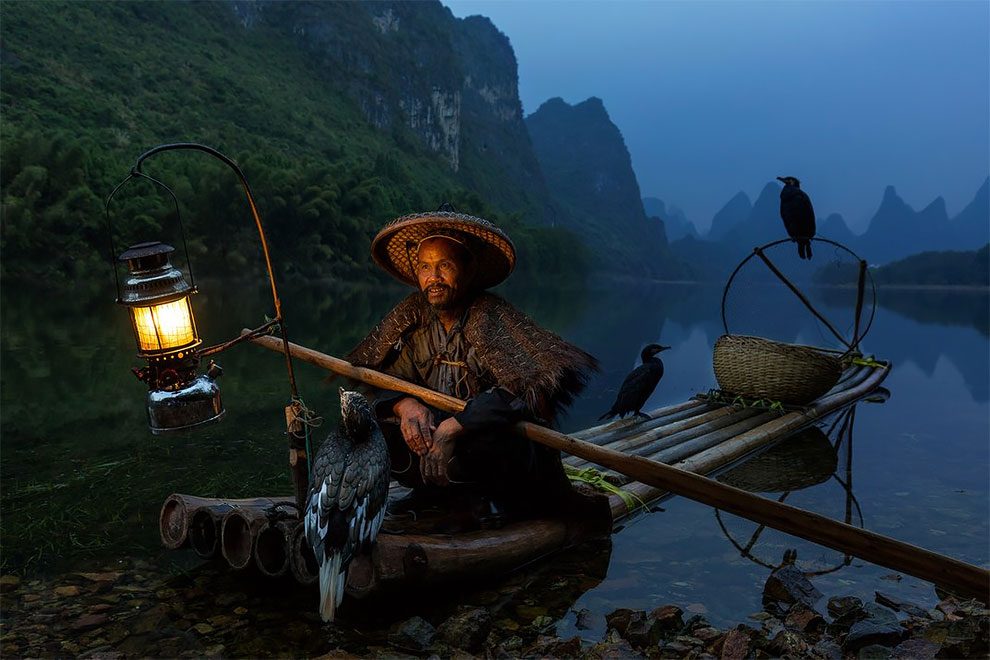
The traditional cormorant fisherman in China works in the early hours before sunrise. He will sail on his bamboo raft with his trained cormorants to catch some fish. (© Duangmon C/Smithsonian Photo Contest)
116
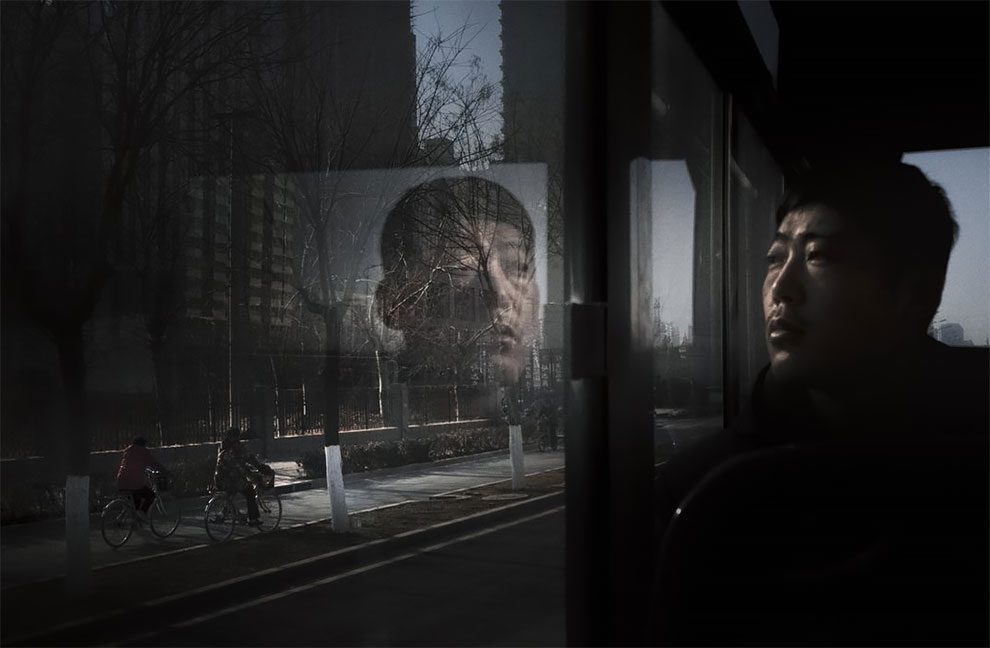
This shot was taken in China’s Shijiazhuang, which is considered one of the most polluted cities in Asia. (© Arek Rataj/Smithsonian Photo Contest)
Orangutan
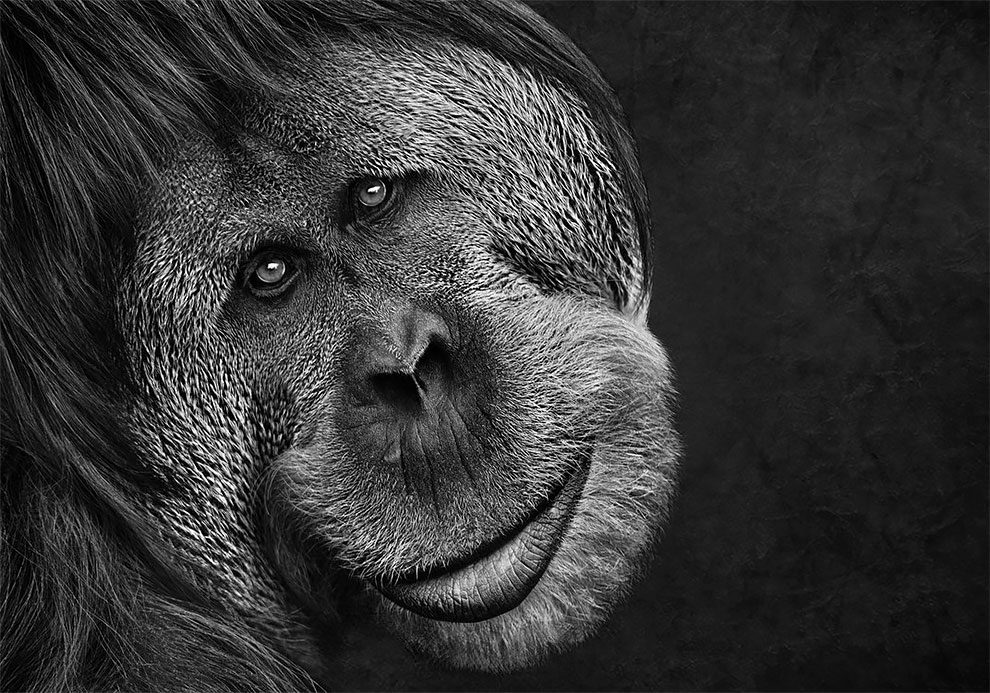
Dinar the orangutan is visually striking and has an emotive face. The image was constructed by converting the orangutan image to black and white and editing the fur around the edge of his beard. Then I shot a marble headstone and duplicated that image into different layers, played around with the opacity and changed the orientation, before finally painting it across the layers to get the right look. (© Alexandra Cearns/Smithsonian Photo Contest)
Snow Geese at Bosque del Apache
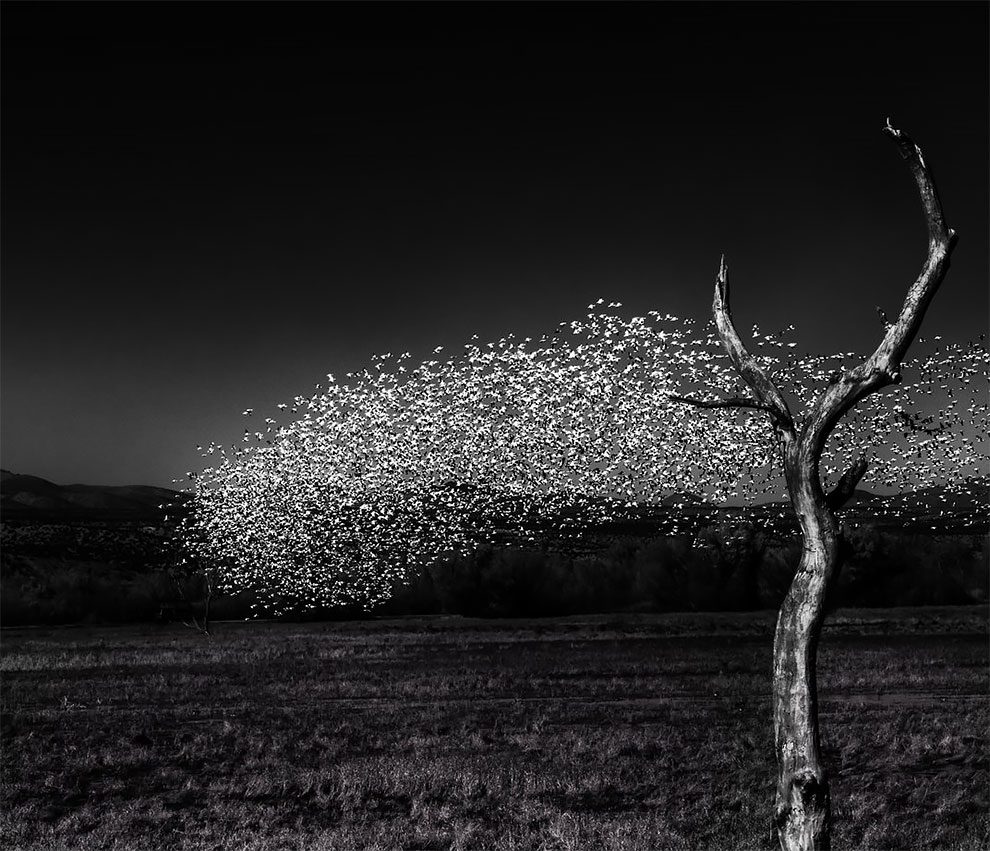
Black and white seemed to suit the burst of snow geese in the landscape. (© Lee Levin-Friend/Smithsonian Photo Contest)
Improvisation
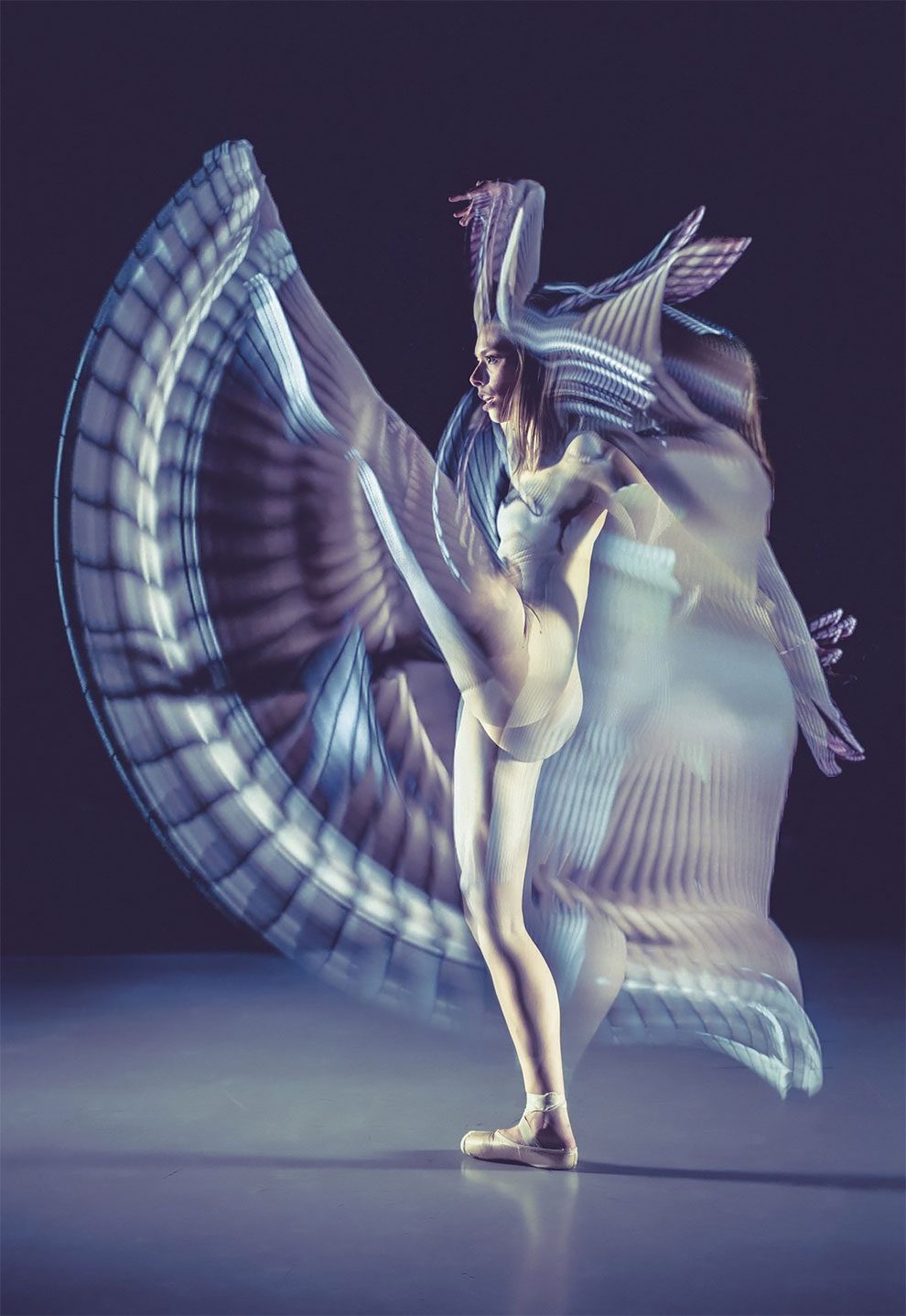
Dance improvisation in the studio. (© Jim Mneymneh/Smithsonian Photo Contest)
Dreaming Matera
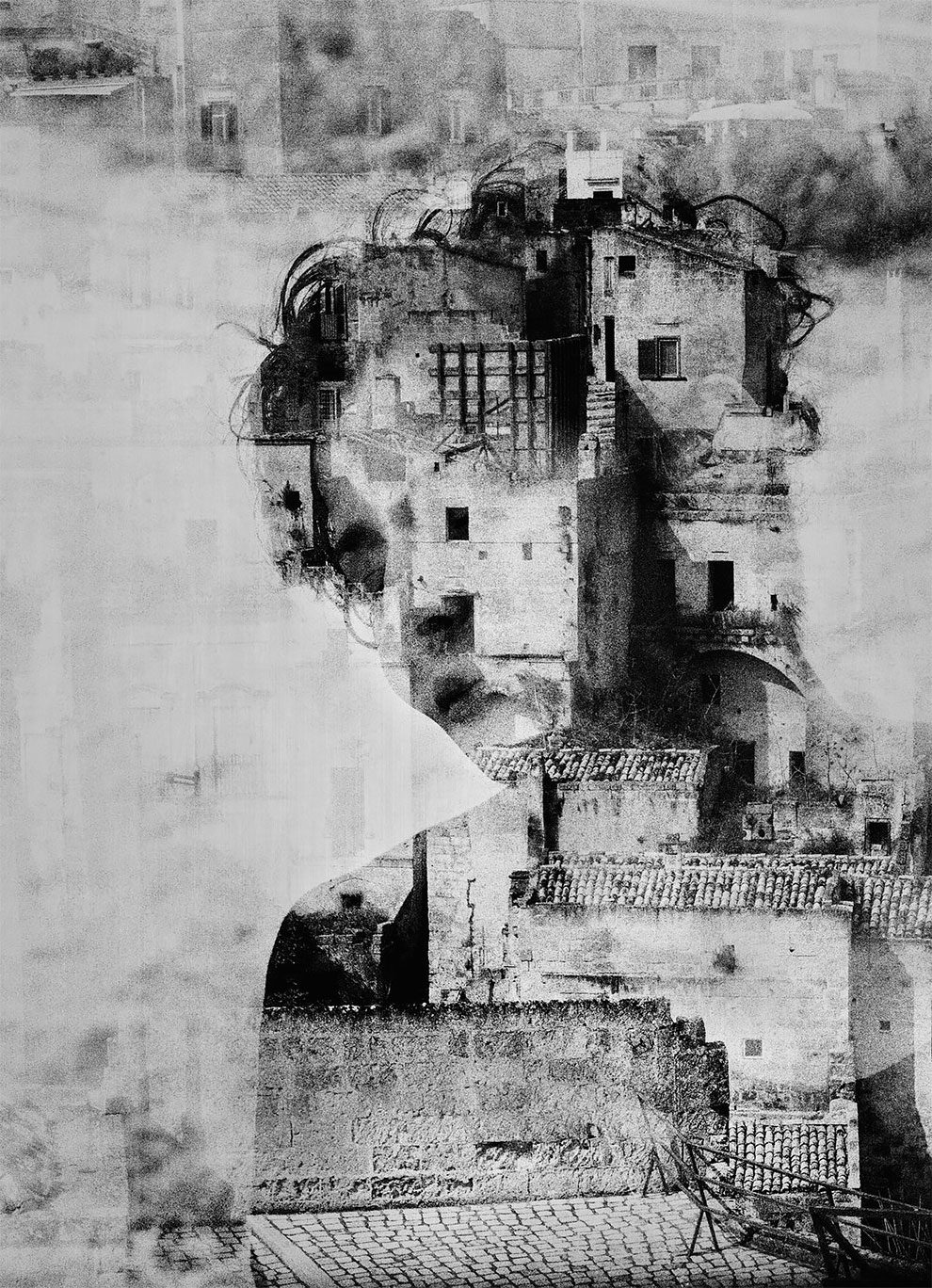
A trip to Matera with the woman I love. Double exposure with her face and the Sassi di Matera. (© alessandro cocca/Smithsonian Photo Contest)
Shelter Pets Project – Peggy Sue
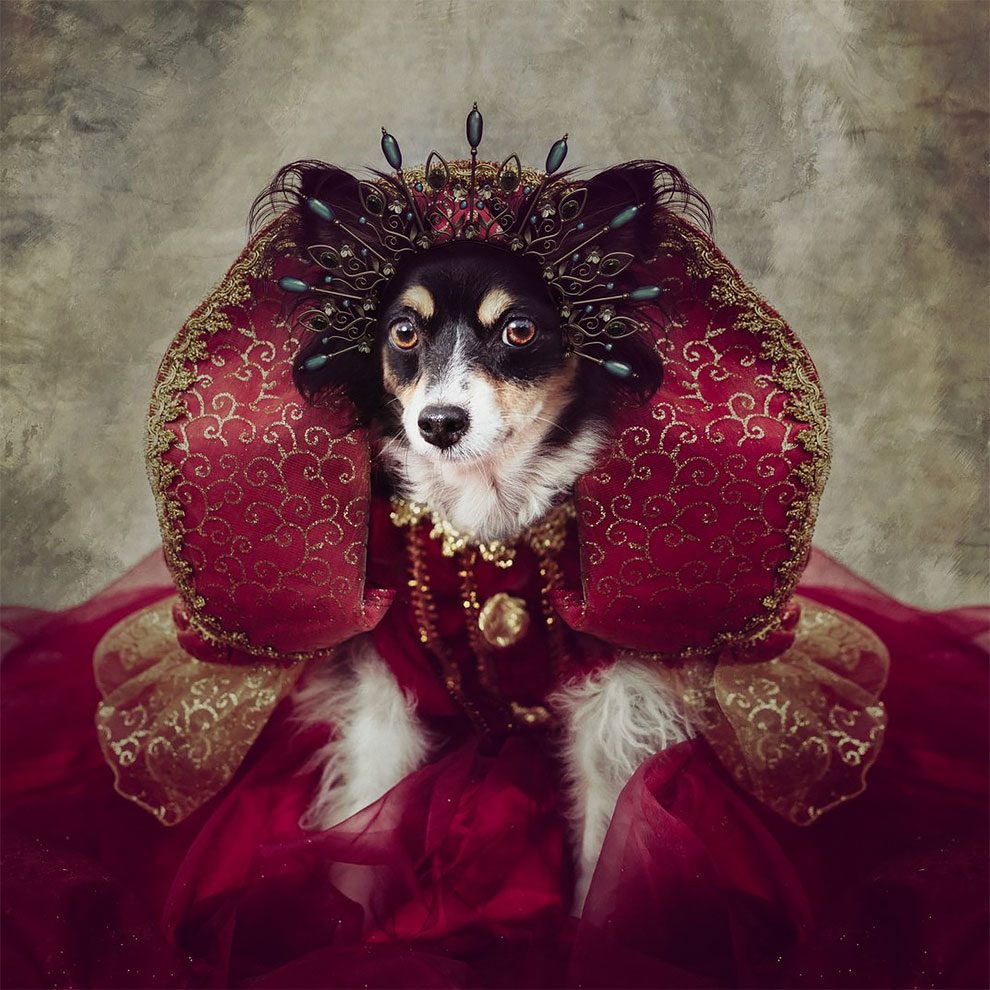
Last year my photography partner, Tammy Michael, and I began volunteering at our local animal shelter, Union County Animal Protection Society (UCAPS). We provide them with fine art/fashion portraits of their pups in hopes of increasing their chances for adoption and the perception of rescue animals. The response to the Shelter Pets Project has been remarkable. So far over 100 have been photographed. Eighty percent of the animals we have photographed have either been adopted, transferred to another shelter or have multiple pending adoption applications. We want to change the way the shelter animals are perceived. The common perception is that these animals are unworthy, discards from others or that they have health issues. It is true that most have been discarded and abused by people, but that has nothing to do with the animal and everything to do with us. We allow that to happen by not creating stricter laws with tougher penalties and insisting they are enforced.
Every animal we have photographed at UCAPS is amazing. Each one has such a different personality and disposition. We wanted to showcase that and did so by dressing them up accordingly. Over the past year, Shelter Pets Project has become a viral campaign. We have had the privilege of photographing these dogs in couture fashion from top designers in New York City. These dogs are regularly featured on Vogue Italia’s website as well as Vanity Fair, NY Post, Good Morning America and countless other media outlets.
Ms. Peggy Sue is a five-year-old papillon that was found wandering the streets of Union County, Arkansas. After a month of multiple attempts through social media to locate an owner, no one came forward. She was then put up for adoption at UCAPS. Peggy Sue soon found her new family and is in a loving home. When we first saw Peggy Sue, we fell head over heels for her. She had a royal appearance, and she held her head high despite everything she had been through in the past. We decided she deserved to be a queen in her photograph. (© Tammy Swarek – previously featured/Smithsonian Photo Contest)
The Beauty of Tokyo at Night
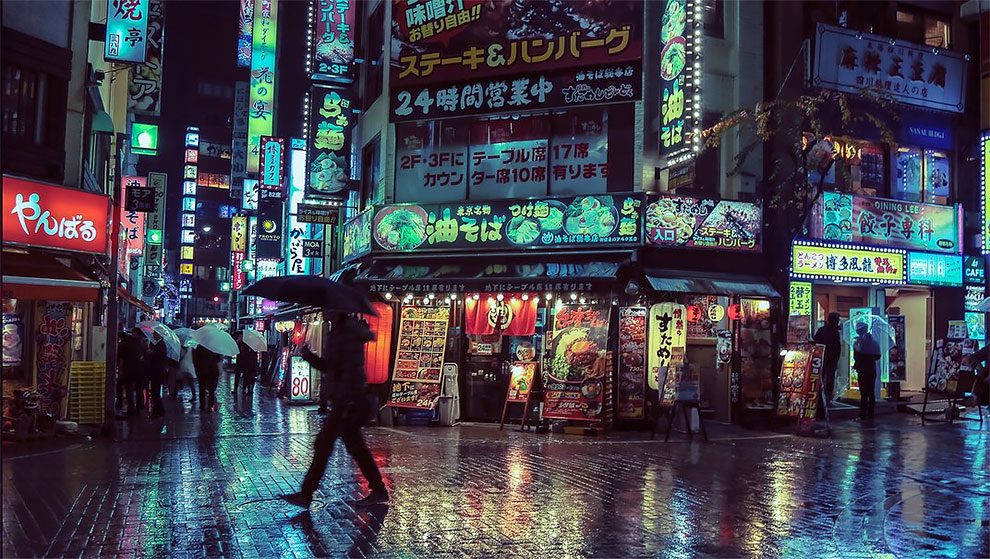
Shinjuku Nights / 新宿区 / 03:25:07 / Rain falls over Tokyo’s red light district. Taken as part of my photo series ‘T0:KY:00’ capturing the beauty of night. Taking real moments and transforming them into the surreal. (© Liam Wong – previously featured/Smithsonian Photo Contest)
The Bear Odd Couple
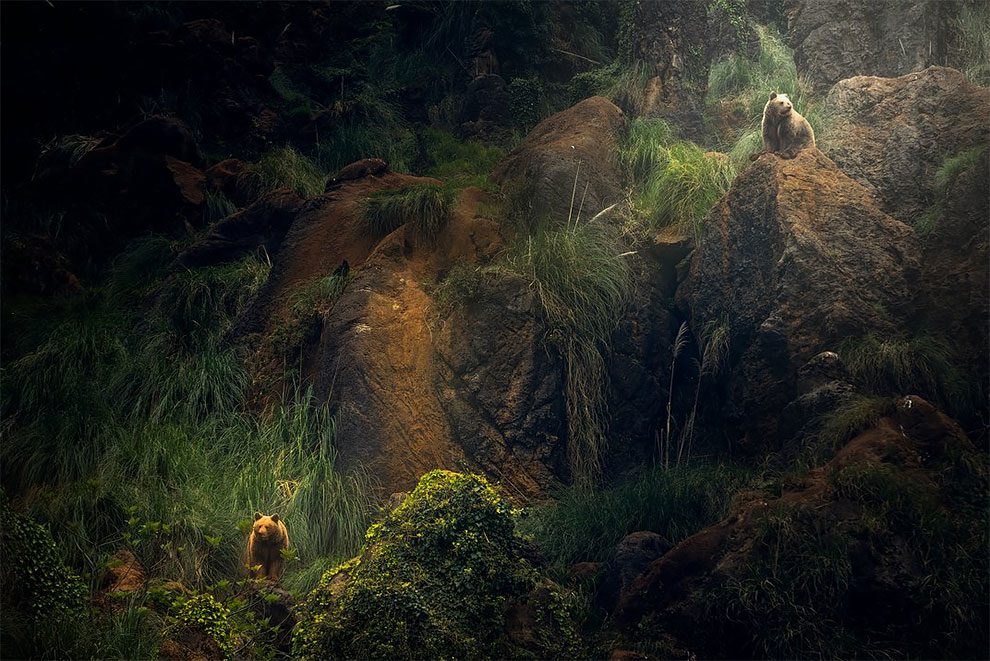
My wife and I were visiting Cabárceno Natural Park with our kids when we realized that dozens of bears were just in front of us. I got the camera and my 70-200mm and took almost two hundred pictures. Then I saw this bear odd couple that seemed to be upset with each other but together. It reminded me of “The Odd Couple” movie with Jack Lemmon and Walter Matthau. (© ALFONSO DOMINGUEZ/Smithsonian Photo Contest)
Snowflakes
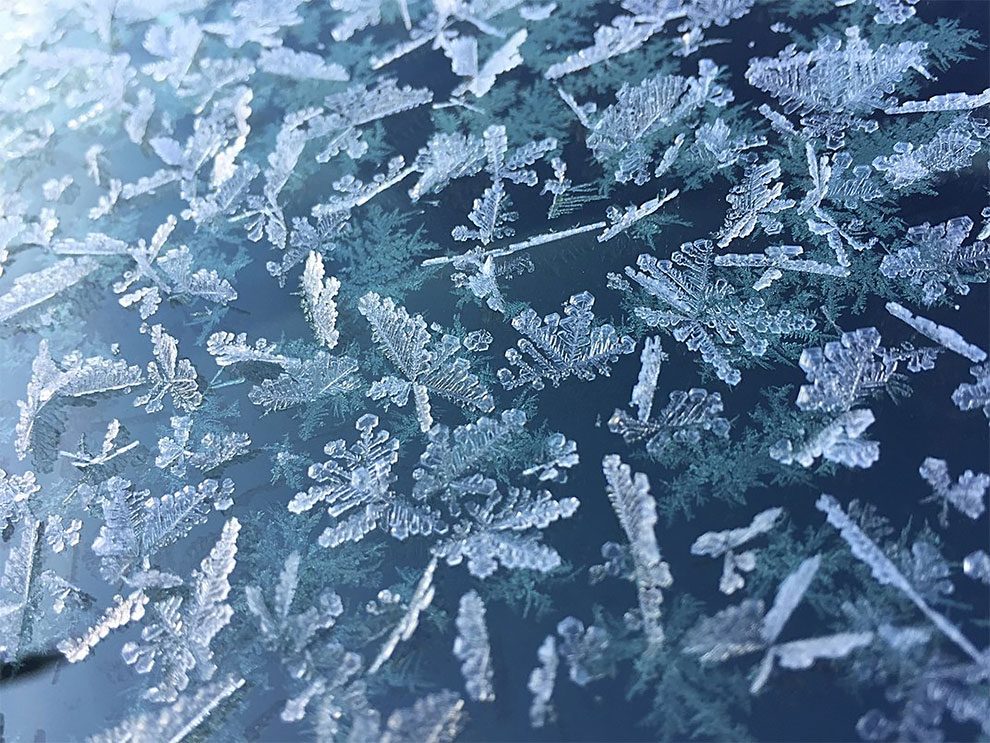
Snowflakes on my car windshield. (© rekha Bobade/Smithsonian Photo Contest)
Volando en las nubes del agua
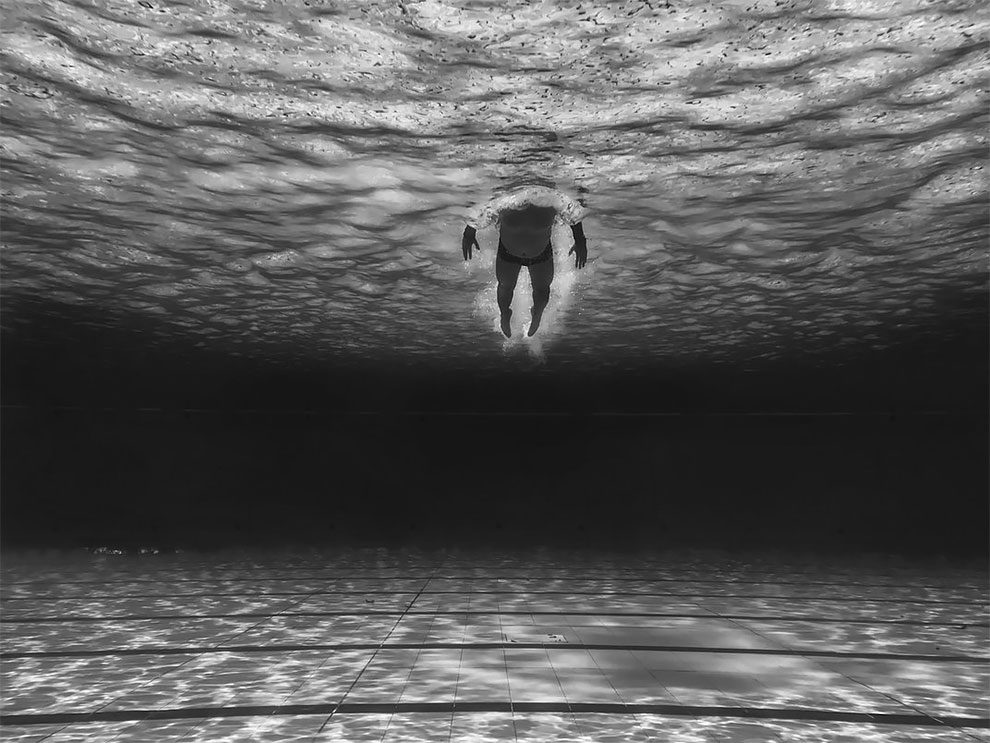
A man swims in the Olympic-size pool in Medellín, Colombia. (© Luis Henry Agudelo Cano/Smithsonian Photo Contest)
Noon
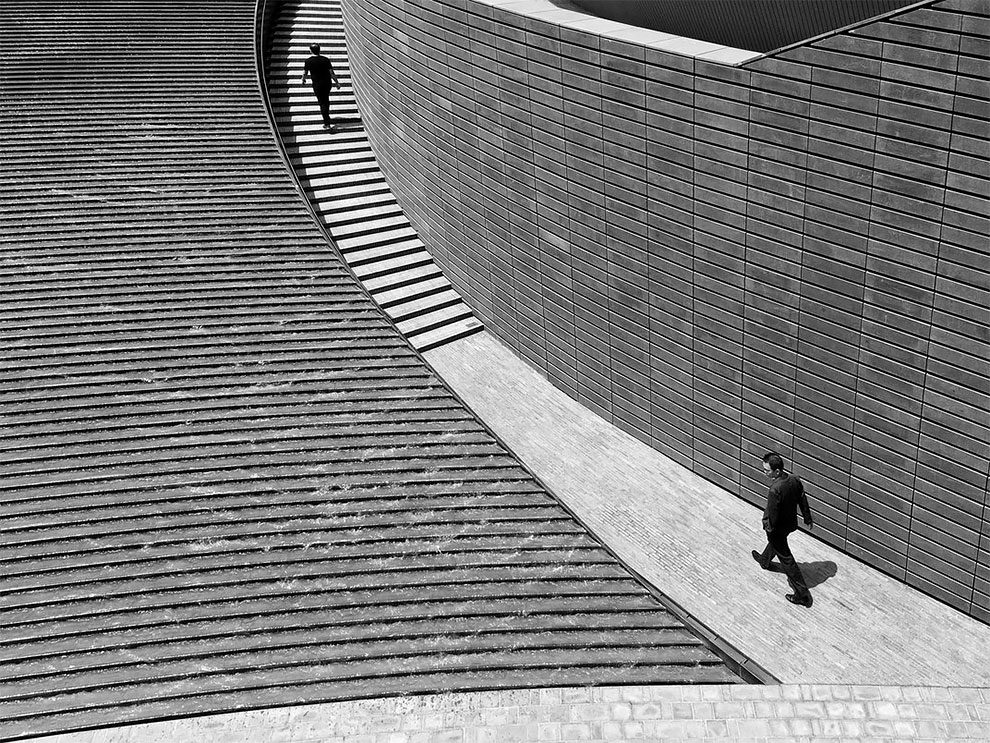
Shot in Poly Plaza, Beijing, China. (© Jian Wang/Smithsonian Photo Contest)
Rainy Day

The beauty of a rainy day. (© Aung Ko Latt/Smithsonian Photo Contest)
Surreal
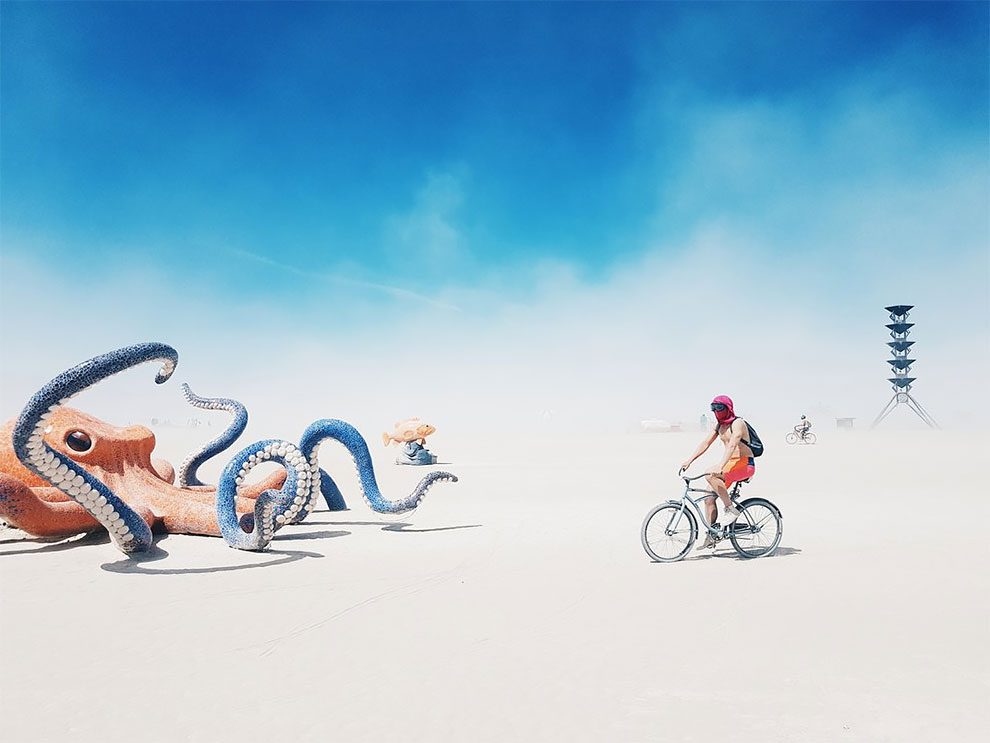
A man bikes by an octopus statue at the Burning Man festival in Black Rock City, Nevada. (© Alina Rudya/Smithsonian Photo Contest)
Into the Woods
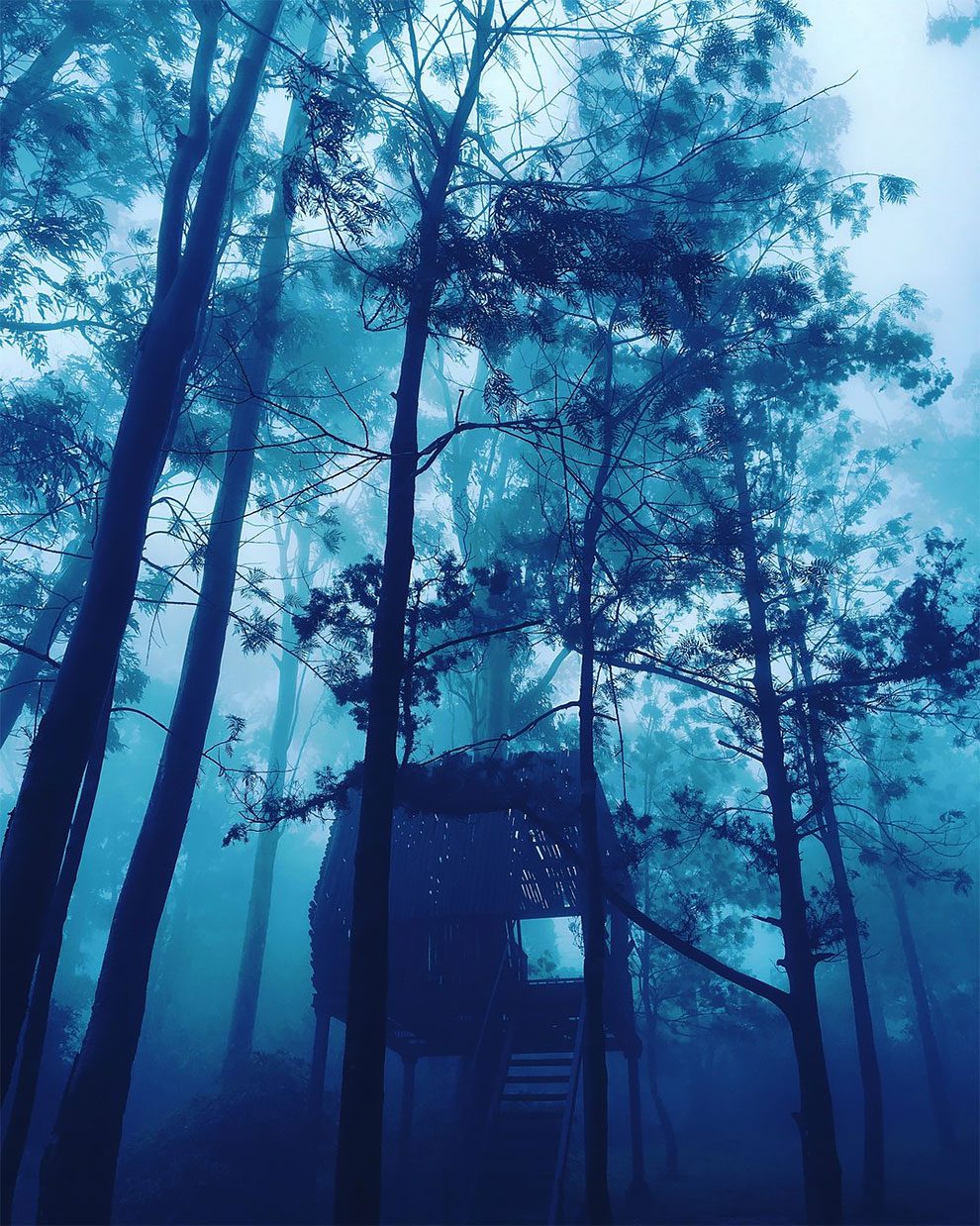
A tree house in the woods. I was traveling to Bangalore for a week to visit some of my friends. There we went to Nandi Hills for a sunrise view. (© vickson dasan/Smithsonian Photo Contest)